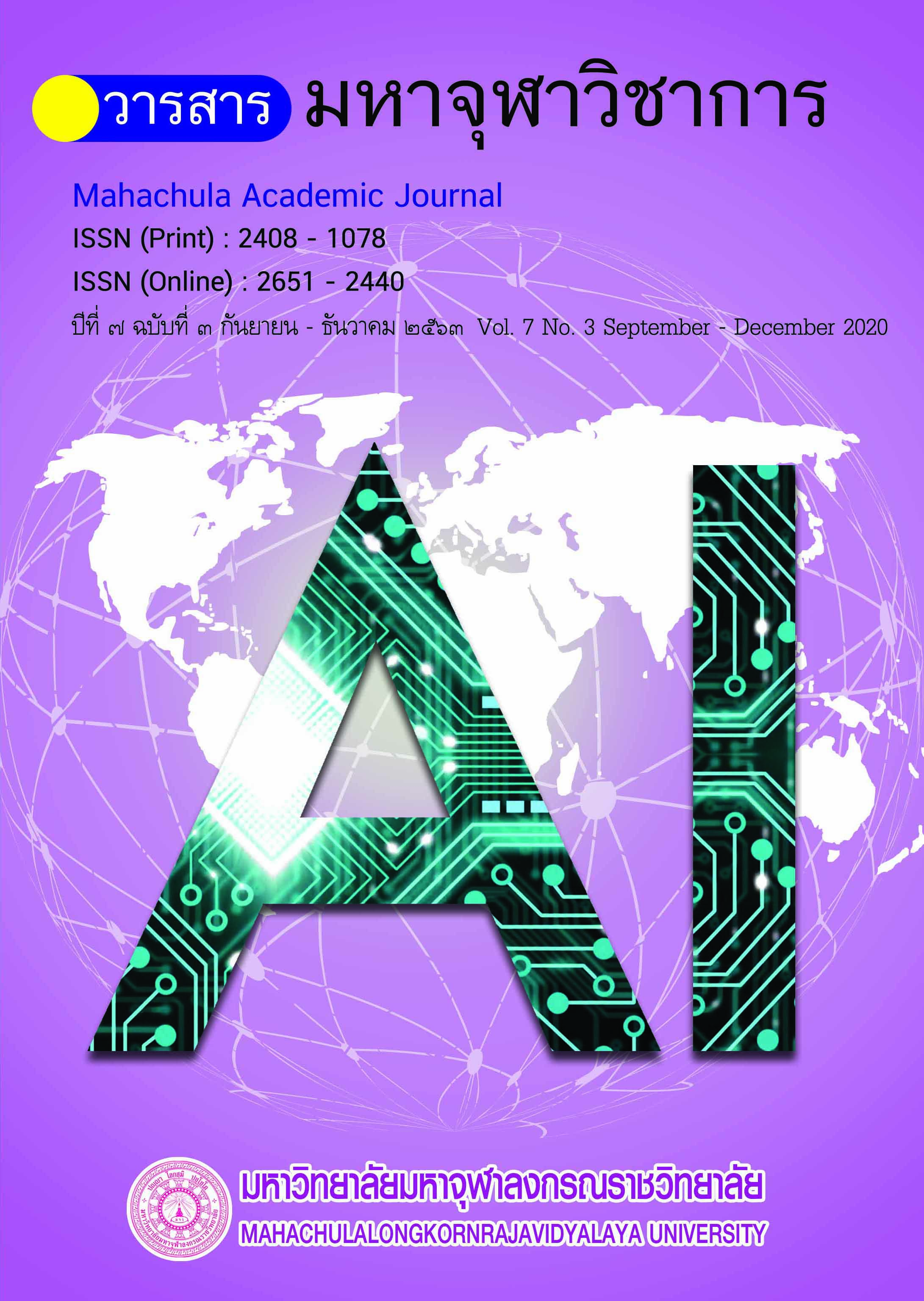Buddhist Teaching Methods According to Navangasatthusasana
Main Article Content
Abstract
Objectives of the dissertation titled “Buddhist Teaching Methods According to Navangasatthusasana” are as follows: (1) to study the concept and theory of teaching, (2) to study Navangasatthusasana as the Buddha’s teaching method, (3) to integrate teaching methods according to Navangasatthusasana and (4) to propose a guideline and to build a new body of knowledge regarding a model of teaching methods of Buddhism according to Navangasatthusasana”. The research employed the documentary qualitative research collecting data from primary sources, Tipitaka, and commentaries and other related secondary sources. Data were also collected from 17 key-informants through in-depth interviews.
The research found that
most educational teaching models in the world use Bloom’s Taxonomy as a foundation of learning psychological base. It focuses on the development of learners in three domains, namely cognitive domain, affective domain, and psychomotor domain. Nowadays, the teaching model has been changed to learning skills in the 21st century. It focuses on the development of learner skills in 5 areas: literacy, thinking, working, technology and information, and living. The whole Buddhist educational content is called the Navangasatthusasana. It consists of nine aspects, namely Sutta (Descriptive), Geyya (Melody), Veyyakarana (Enumerating), Gatha (Poetry), Udana (Proclaiming from Deep Feeling), Ittivuttaka (Reference), Jataka (Previous Birth), Abbhutadhamma (Miracle) and Vedalla (Question and Answer). Each aspect facilitates learners to better understand the content and enables them to change themselves.
The teaching methods of Buddhism in accordance with Navangasatthusasana can be integrated in four dimensions, namely (1) the holistic structure; using descriptive, descriptive and poetry, and poetry; (2) the essence of Dhamma:, teaching that aim for learners to support each other in society, to abide by social rules, to strengthen learners’ mind, and to recognize events that occurs; (3) hermeneutics; interpretation of Buddha’s teachings and its implementation using a language that suits the person, time and space; (4) the readiness of the person,: observation of both internal and external readiness of learners. This teaching method creates balance in science and art. This requires a model of educational innovation and non-attachment that promote learners to acquire intellectual skills, awareness and ability to solve problems in life.
From the synthesis of research results, are created sciences, aesthetics, innovation, non-attachment, and penetrating insight called SAINP Model.
Article Details
References
บุญพิศ นัยน์พาณิช. “การสอนพระพุทธศาสนาตามแนวนวังคสัตถุศาสน์”. ดุษฎีนิพนธ์ศาสนศาสตรดุษฎีบัณฑิต. บัณฑิตวิทยาลัย: มหาวิทยาลัยมหามกุฏราชวิทยาลัย. ๒๕๖๒.
พระธรรมปิฎก (ป.อ. ปยุตฺโต). ทางสายอิสรภาพของการศึกษาไทย. กรุงเทพมหานคร: มูลนิธิพุทธธรรม. ๒๕๔๑.
พระพรหมคุณาภรณ์ (ป.อ. ปยุตฺโต). พจนานุกรมพุทธศาสน์ ฉบับประมวลศัพท์. พิมพ์ครั้งที่ ๒๓. กรุงเทพมหานคร: ผลิธัมม์, ๒๕๕๘.
มหามกุฏราชวิทยาลัย. พระไตรปิฎกและอรรถกถา แปล. พิมพ์ครั้งที่ ๑๐. นครปฐม: มหามกุฏราชวิทยาลัย, ๒๕๕๘.
วิจารณ์ พานิช. การสร้างการเรียนรู้สู่ศตวรรษที่ ๒๑. พิมพ์ครั้งที่ ๒. นครปฐม: มูลนิธิสยามกัมมาจล, ๒๕๕๗.
สำนักงานส่งเสริมสังคมแห่งการเรียนรู้และคุณภาพเยาวชน. ทักษะแห่งอนาคตใหม่ : การเรียนรู้ในศตวรรษที่ ๒๑ คืออย่างไร ?. [ออนไลน์]. แหล่งที่มา: www.qlf.or.th [๕ สิงหาคม ๒๕๖๒].
อาภรณ์ ใจเที่ยง. หลักการสอน. พิมพ์ครั้งที่ ๕. กรุงเทพมหานคร: โอเดียนสโตร์, ๒๕๕๓.
Mike Gershon.How to Use Bloom’s Taxonomy in the Classroom: The Complete Guide. USA: Mike Gershon, 2015.


